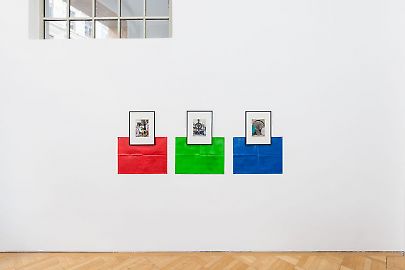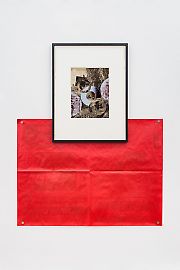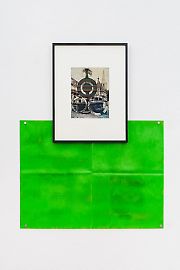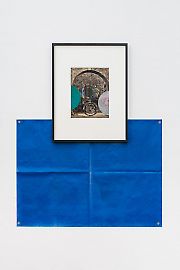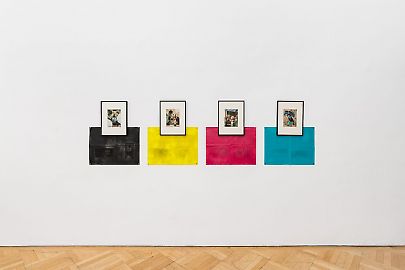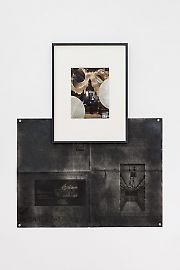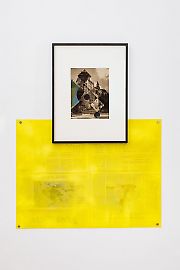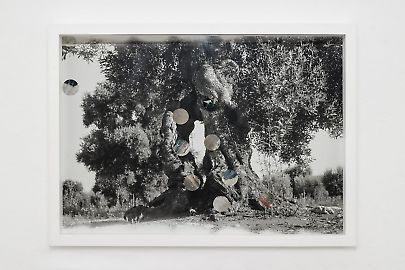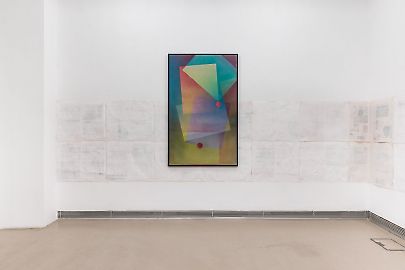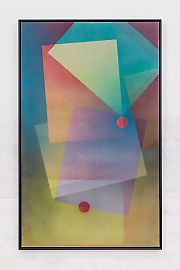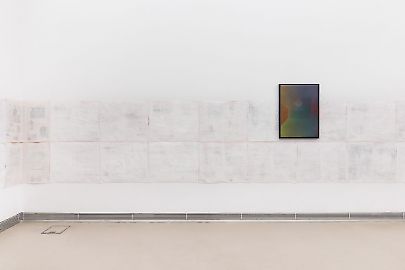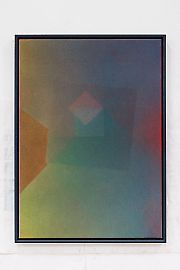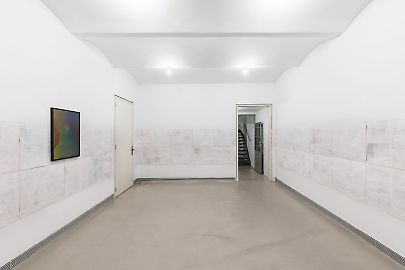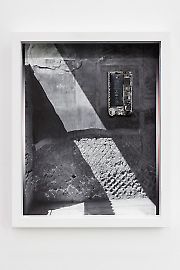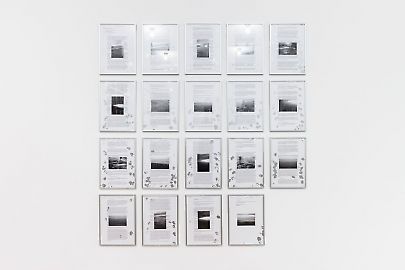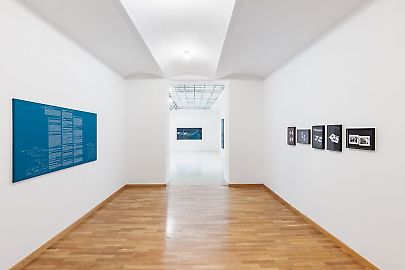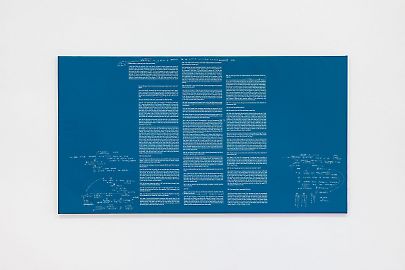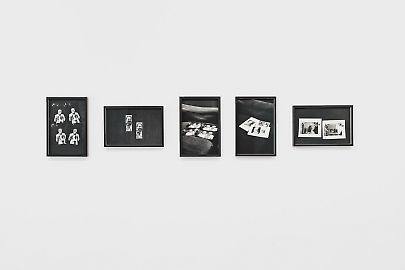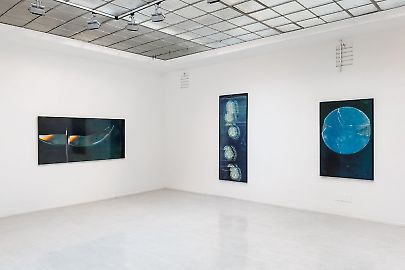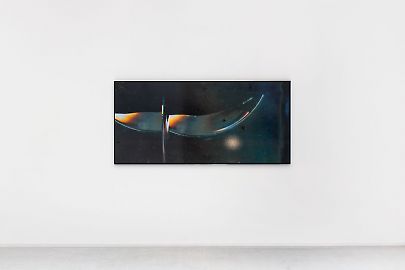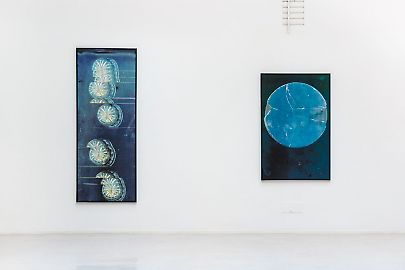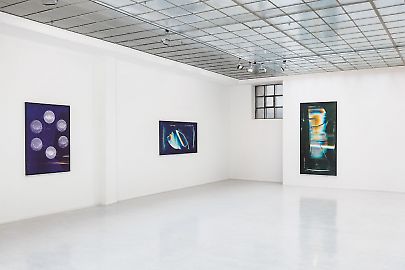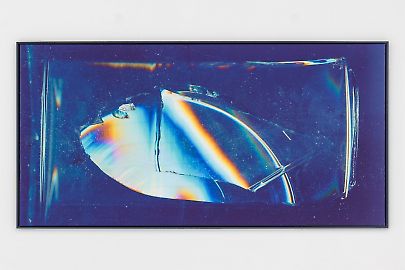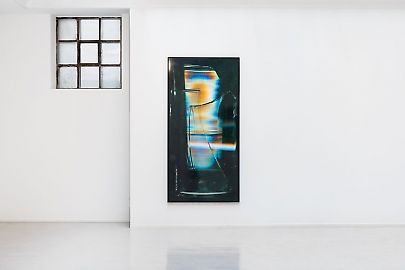Mladen Bizumic -- COPIA: Collection of Post-Industrial Arts
Opening: November 9, 2023, 19.00-21.00
Not many people know that the space now occupied by Georg Kargl Fine Arts gallery was once a printers, the Druckerei Guberner & Hierhammer, whose printing presses were located in the gallery’s largest space. Today, this kind of printing is fading from sight, replaced by the digital files pulsing across our screens. Mladen Bizumic’s exhibition COPIA: Collection of Post-Industrial Arts examines and contests this shift, weaving together historical and contemporary photographic techniques into hybrid images, mixtures of analog and digital technology that form part of his ongoing practice of media archeology uncovering our past in order to understand our present.
Bizumic’s practice traces technological and cultural transitions and mutations, focusing on how photography has changed as it moves from analog to digital techniques. Bizumic’s ALBUM series, which forms the centre of his show at George Kargl Fine Arts is typical of his approach. Each image records its own construction through a mixture of digital and analog technologies and techniques. The works begin with an old HP Scanjet G4050 scanner that the artist bought in 2005 to digitise slides and had put in storage, until he recently needed to scan his passport. After doing so, he saw a lot of squiggly lines on the digital image, lines that were certainly not on his passport. These lines were inside the machine, and were not damage but mycelium, an organic fungus made up of branching, thread-like hyphae. In an attempt to see it better, Bizumic placed a piece of glass on the scanner, hoping to enlarge the lines, but instead the glass refracted the scanner’s light, casting its glittering fragments through the image. This was the beginning of the ALBUM series, works that reached their final form when Bizumic selected the ‘million colours’ option on the computer application, which installs a very slow scanning process. During the scan the artist moves the object, something the machine cannot properly process and translates it into glitch-rainbows. Bizumic’s method does not, therefore, utilise the speed of digital processing and the ubiquity of its networks, but instead takes advantage of the slowness of its supposedly redundant technology to produce an image that fails to properly register its object, constructing as it does a photograph that is entirely specific to its singular process. The digital image files produced are then printed once onto canvas, giving them the appearance and uniqueness of paintings.
The artist writes: "I was intrigued by media reports of AI's ability to see images, which I related to my scanner’s malfunction. After some research, I found out that American engineer Russell Kirsch developed the first digital image scanner in 1957 at the National Bureau of Standards. I emailed Russell´s son, Walden whose portrait as a four-month-old baby was the first digital image ever. Walden suggested that I speak to his mother, Joan Levin Kirsch who knew a lot more. I discovered that Joan, Russell’s widow was an art historian who worked at MoMA and the Smithsonian and had influenced her husband's computer inventions but received no recognition. And so, appropriately enough, it turns out that the marriage between the early computer scientist and the modern art curator is a foundation of my current series ALBUM.”
In the ALBUM series Bizumic explores digital photography in new ways, proposing alternative uses of technology to explore its more abstract and emotional modalities. But perhaps most significantly, his work resists the instantaneity of digital images, their simultaneously unavoidable and transitory existence, as they flash and disappear in the continuous turnover of the feed. Bizumic’s work instead provides a slower touch, a temporal embodiment that goes beyond the frenzied swipe of our finger. Nevertheless, the artist’s position is not against but within, and rather than rejecting digital technology, his work instead tries to go beyond its everyday ubiquity and extend its limits. He does this by stretching its instant, introducing time into its image and in this way suspending the picture between analog and digital, eye and hand, and finally between painting and photography. But Bizumic’s work is neither one nor the other, because both are disturbed in the process of their combination, which opens a space for something new.
Dr. Stephen Zepke, 2023



